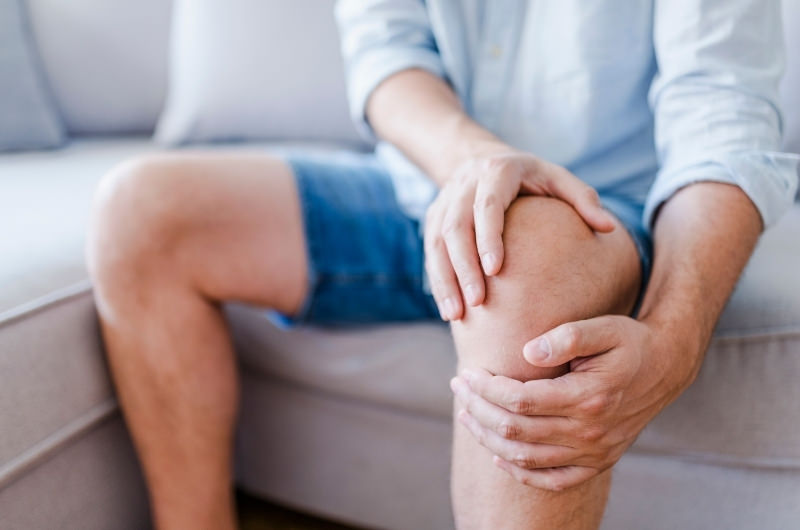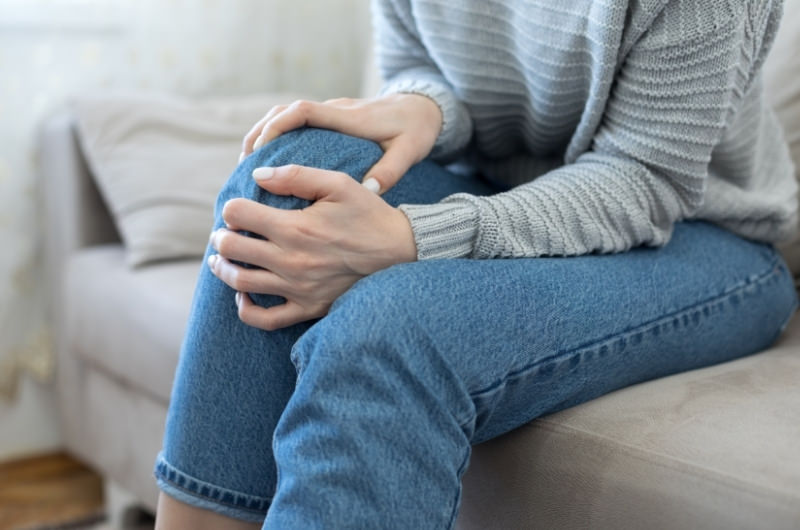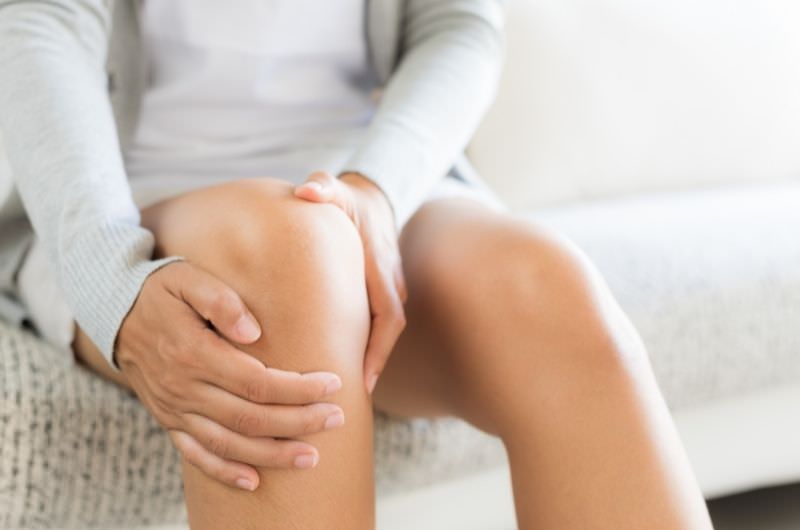If something prevents your knee from bending past 90 degrees, it’s probably due to an injury that you have sustained due to some form of physical activity. Patellofemoral syndrome and arthritis can also be a reason. While minor pain and swelling might not be something to panic about, if the swelling continues and the pain intensifies as you try to bend your knee, you will need immediate medical assistance. Remedies can range from simple exercise-based home remedies to medical procedures under the guidance of a doctor or physical therapist. You can also prevent future knee injuries by utilizing safety precautions like knee guards and warm-up exercises.
Knee pain is an old friend of mine. It doesn’t matter how old you are, you’ve probably experienced some trouble with your knees at some point.
Our knees have a rather complex internal structure, with ligaments, tendons, and cartilage which helps us move our knees flexibly and easily. But due to its internal complexity, a lot can go wrong with it.
As per a 2008 study conducted by the Society of Academic Emergency Medicine, the knee became the most commonly injured joint among active athletes.
But why can’t you bend your knee above 90 degrees? When should you seek medical attention after a knee injury? What remedies can you do to recover back your knee flexibility and overcome the pain? How can you recover your knee-bending gradually after surgery? How can you prevent yourself from getting a knee injury in the first place?
Why can’t you bend your knee past 90 degrees?

If you’re struggling with bending your knee because of sharp pain, the most probable cause would be an underlying symptom of the below-mentioned diseases or conditions.
- Locked knee condition – This happens by a mechanical impairment in extending your knee like a bucket handle tear of the meniscus, or loose osteochondral fragments.
- Patellofemoral syndrome – This is also called runner’s knee syndrome because it’s a condition that grows with the overuse of the knee joint or injuring the knee. This condition is very popular among athletes but even if you’re not one, that doesn’t mean that you’re out of the woods.
- Patellar Tendonitis – This too is a common athlete injury that causes inflammation of the tendon that attaches your kneecap to your shinbone. Your pain might differ from mild to severe when trying to bend your knee. A 2005 study revealed that roughly 40 to 50% of skilled volleyball players have gone through this injury.
- Osteoarthritis – This disorder mainly happens as you age. It’s a specific tear on your joints as the cartilage that protects your joints start wearing out and making your bones rub against each other eventually causing inflammation in the joints. So, if you try to get past a 90-degree bend, you will feel it. This is not just limited to your knees, but can also affect your hips, wrists, ankles, and fingers.
- Baker’s Cyst – Medically known as a popliteal cyst, it’s a swelling that creates an awkward bump at the back of your knee filled with fluid. This can hinder your knee movement especially when you try to bend or even extend your knee. This can be caused by cartilage injury or even by osteoarthritis.
Since most of the above-mentioned conditions are triggered by knee injuries, it is important to know at what point can a knee injury be risky.
At what point should you seek medical attention for the knee pain?

If you play any sport, you’re no stranger to knee injuries.
This is why you need to look out for specific signs apart from the inability to bend past 90 degrees, showing that you might need to visit your doctor.
- Serious Swelling – If your swelling is minor, you needn’t worry too much as a 2020 study done by the Cleveland Clinic revealed that this swelling is naturally caused by the rush of cells known as macrophages to the affected areas. But if the swelling seems unusual and is large, it’s best to consult your doctor as soon as possible.
- ‘Pop’ sound – This much anticipated ‘pop’ sound means that something is out of its usual place. This noise might be heard directly in your ear as if the sound travels up your body and gets audible once it reaches your brain.
- Cannot withstand weight – If your knee hurts when you add pressure to it this could mean that you have a fracture, bone contusion, ligament tear, or cartilage injury which needs an immediate orthopedic evaluation.
Home remedies and medical treatments for knee recovery
If your knee doesn’t seem to have any of the serious symptoms mentioned above and doesn’t hurt as much, you could always try out some helpful home remedies to improve your knee-bending and relieve your pain.
On the other hand, various medical treatments are also available if you’re looking for a quick, dependable fix.
| Home remedies for knee recovery | Medical treatments for knee recovery |
| 1. The RICE method – this is pretty much resting, wrapping ice on a cloth and applying it on your knee area, compressing with an elastic bandage, and elevating your knee to a higher place above your heart. | 1. Braces/Casts – Doctors often recommend this, as wearing a brace or a cast will protect your knee from further injury while speeding up the healing process. |
| 2. Applying Heat – If you feel that what you’re experiencing is arthritis or stiffness, a warm compress will give you relief. | 2. Physical therapy – A physical therapist can guide you through specific exercises for your special injury, which will help you to develop your mobility and knee flexibility. |
| 3. Giving massages – For this, you simply need to apply pressure on your muscles. Trigger point massages and deep tissue massages will be refreshing for you. | 3. Orthotics – You can buy these shoe inserts at your local drugstore, which will decrease the exerted pressure on your knee |
| 4. Knee exercises – You need to slowly and carefully stretch your knee muscles which will help reduce the pressure on your knee joint. | 4. Surgery – If other home remedies and medical treatments prove ineffective, the last option to resort to would be surgery, which includes total knee replacement. |
How can I increase knee-bending post-surgery?
After a total knee replacement surgery, you will most surely witness some discomfort during the recovering process, especially since you can’t directly go back to bending your knee completely.
You will notice that your knee can automatically position at a 90-degree angle. To practice bending further, you can try sitting upright on a chair and slowly move your leg forwards till it stays stretched with the toes on the floor.
Then you can bring your leg backward unto the foot of the chair. This motion applies only a small amount of pressure to feel the least amount of pain.
By repeating this process and by allowing yourself the time to recover, you will find yourself capable of bending the knee flexibly with time.
Preventing future Knee-injuries
Now we all know it’s best to prevent something painful from happening rather than having to face the burden of recovering after an injury, which is why it’s always best to follow simple safety measures, especially if you’re a sporty outdoor person.
The first thing that you need to be aware of is giving yourself a warmup time and a cooling downtime before and after any physical sport.
This will help your muscles adapt to the workout and train them for regular exercise. In the same way, you also need to avoid drastically changing the intensity of your workout because it might inflict added strain onto your knees, paving the way to a possible knee injury.
You can also try wearing knee guards depending on the sport that you do. If you play a sport like cricket, you will find that knee guard are crucial, but for sports like swimming, it’s entirely irrelevant.
When picking your knee guard, you need to make sure that it properly fits you and doesn’t hang loose. Another important factor that most people ignore is replacing worn-out shoes regularly.
Based on the type of activity you do, your shoes will need replacement every few months. This is vital not only for your feet but for your entire body as a slip and fall could be entirely unpredictable.
Conclusion
Our knees are known to be one of the most complicated and largest joints of the human body, and it absorbs several shocks daily, like whenever you bump into your furniture.
Unfortunately, this is what makes our knees vulnerable when it comes to an accident or fall. A 2012 study presented an estimated 6.6 million knee injuries present in the US from 1999 to 2008.
Under these alarming results, it’s always safer to take precautions before engaging in heavy exercises or sports, as even the smallest safety measure can make all the changes at the right time.
The key takeaway is that if you feel your knee pain worsening, visit your doctor rather than ignore it.


